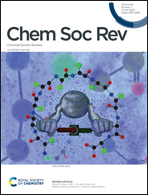Atomic site electrocatalysts for water splitting, oxygen reduction and selective oxidation
Abstract
Electrocatalysis plays a central role in clean energy conversion, enabling a number of processes for future sustainable technologies. Atomic site electrocatalysts (ASCs), including single-atomic site catalysts (SASCs) and diatomic site catalysis (DASCs), are being pursued as economical alternatives to noble-metal-based catalysts for these reactions by virtue of their exceptionally high atom utilization efficiencies, well-defined active sites and high selectivities. In this review, we start from a systematic review on the fabrication routes of ASCs followed by an overview of some new and effective characterization methods to precisely probe the atomic structure. Then we give a comprehensive summary on the current advances in some typical clean energy reactions: water splitting, including hydrogen evolution reaction (HER) and oxygen evolution reaction (OER); oxygen reduction reaction (ORR), including selective 4e− – ORR toward H2O/OH− and 2e− – ORR toward H2O2/HO2−; selective electrooxidation of formic acid, methanol and ethanol (FAOR, MOR and EOR). At the end of this paper, we present a brief conclusion, and discuss the challenges and opportunities on the further development of more selective, active, stable and less expensive ASCs.

- This article is part of the themed collection: Electrochemistry in Energy Storage and Conversion


 Please wait while we load your content...
Please wait while we load your content...